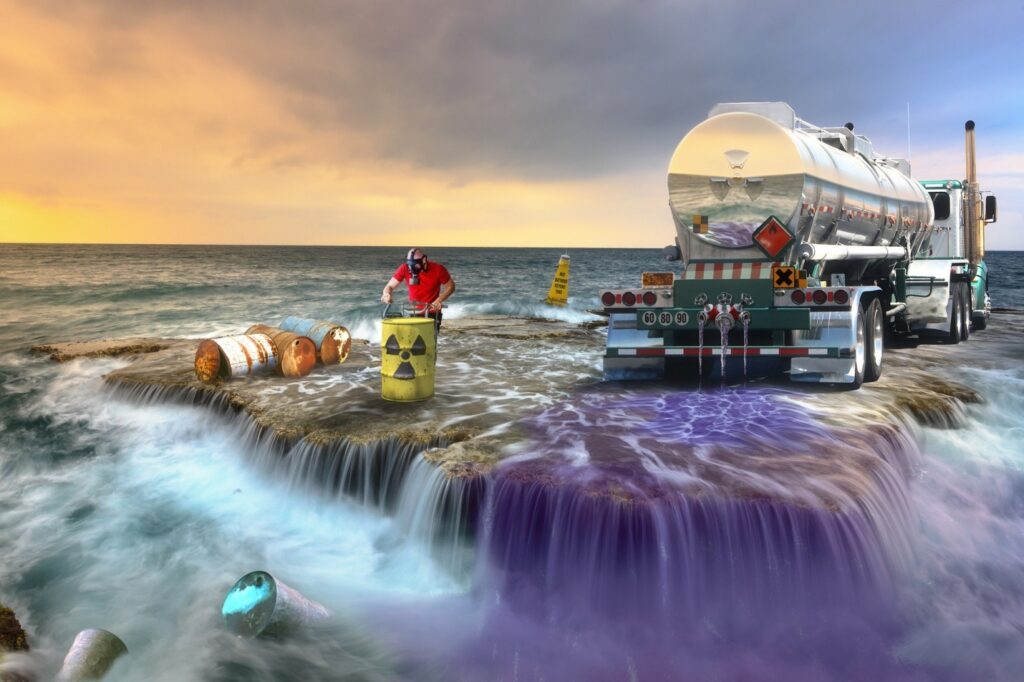A Biased View of Reclaim Waste
10 Easy Facts About Reclaim Waste Explained
Table of ContentsWhat Does Reclaim Waste Mean?A Biased View of Reclaim WasteThe 8-Minute Rule for Reclaim WasteReclaim Waste Fundamentals ExplainedThe 6-Minute Rule for Reclaim Waste
Discover the kinds, occurrences, and kinds of fluid waste. Residential sewage waste describes the waste and products from a household septic storage tank. This type of waste is developed by humans in residences, schools, and various other buildings. This only includes sewage-disposal tanks that have a drain area. The proper administration and disposal of domestic sewage waste call for liquid waste to be transferred to a sewer treatment plant where the correct methods and equipment are used to purify and dispose of waste.
Industrial waste usually includes prospective threats, such as combustible materials or a combination of fluid and solid waste items, and requires a much more sophisticated and thorough disposal process. The disposal of commercial waste commonly entails the filtration of waste before transportation to make sure secure and correct disposal. Hazardous waste is created from by-products and overflow of commercial procedures and manufacturing.
This kind of waste can not utilize the exact same sewer management transportation or procedures as septic or commercial liquids. The commercial waste monitoring process calls for the examination and testing of liquid waste before it goes through the disposal procedure (liquid waste removal melbourne). Overflow waste is the fluid waste that comes from overflow and excess stormwater in highly populated locations or cities
Drainage waste can create contamination and flooding if not taken care of correctly. Discover more concerning sewage system cleaning and waste management. Making sure appropriate waste management can avoid disasters and reduce ecological damage. Both individuals in property settings and professionals in business or manufacturing industries can benefit from recognizing the procedures and policies of liquid waste monitoring.
The Definitive Guide for Reclaim Waste
Call PROS Services today to find out about our waste administration and disposal solutions and the appropriate ways to care for the liquid waste you generate.
(https://www.blogtalkradio.com/reclaimwaste1)Do you understand what takes place to your water when you pull the plug, purge the bathroom or drain the cleaning device? No? Well, it deserves understanding. This supposed 'wastewater' is not only a vital source but, after therapy, will certainly be launched to our land, rivers or the ocean. Made use of water from bathrooms, showers, bathrooms, kitchen area sinks, laundries and commercial processes is known as wastewater.

water made use of to cool equipment or tidy plant and devices). Stormwater, a kind of wastewater, is overflow that streams from agricultural and metropolitan areas such as roofing systems, parks, yards, roads, paths and rain gutters right into stormwater drains, after rain. Stormwater streams neglected directly to neighborhood creeks or rivers, eventually getting to the sea.
The Main Principles Of Reclaim Waste
In Queensland, most wastewater is treated at sewage treatment plants. Wastewater is delivered from residential or commercial websites through a system of sewage systems and pump terminals, known as sewage reticulation, to a sewage therapy plant. Regional federal governments construct, keep and run most sewer treatment plants. Operators are accredited under the Environmental Protection Act 1994 to release cured wastewater at an appropriate ecological requirement into waterways.
The Division of Natural Resources encourages city governments about managing, operating and preserving sewage systems and therapy plants. In unsewered locations, city governments might call for homeowners to mount private or house sewer treatment systems to treat residential wastewater from bathrooms, kitchen areas, shower rooms and laundries. The Department of Natural Resources authorises making use of home systems when they are proven to be reliable.
A lot of stormwater receives no therapy. In some new subdivisions, therapy of some stormwater to remove clutter, sand and gravel has begun using gross toxin traps. Wastewater therapy happens in 4 stages: Gets rid of strong issue. Bigger solids, such as plastics and other objects mistakenly discharged to drains, are eliminated when wastewater is travelled through screens.
Uses small living microorganisms recognizes as micro-organisms to damage down and remove staying liquified wastes and great fragments. Micro-organisms and wastes are incorporated in the sludge.
Top Guidelines Of Reclaim Waste
Nutrient elimination is not readily available at all sewage therapy plants due to the fact that it calls for pricey specialized tools. It is coming to be extra typical in Queensland. Clear fluid effluent created after treatment may still contain disease-causing micro-organisms. If this effluent is released right into rivers such as rivers or the sea, the micro-organisms will ultimately die out.

Most wastewater streams into the sewage system. Under the Act, local federal governments provide approvals and permits for environmentally pertinent tasks (Periods) involving wastewater launches that could have a regional impact.
Reclaim Waste Fundamentals Explained
Monitoring offers valid details about water quality and can confirm that licence problems are being fulfilled. The info acquired with tracking offers the basis for making water high quality decisions.